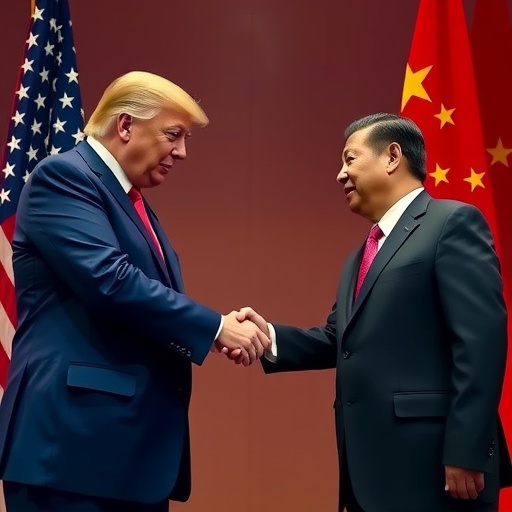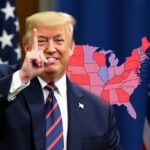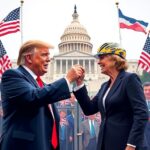U.S.-China Trade Deal Breakthrough: Substantial Framework Averts 100% Tariffs Ahead of Trump-Xi Summit
In a stunning development that has sent shockwaves through global markets, Treasury Secretary Scott Bessent revealed a substantial framework for US-China trade negotiations, potentially sidestepping the imposition of 100% tariffs on Chinese imports. This announcement comes just days before the high-stakes Trump-Xi meeting in Korea, offering a glimmer of hope amid escalating tensions over rare earth minerals and broader economic disputes.
The framework, described by Bessent as a “major step toward mutual prosperity,” addresses critical pain points including export controls on rare earths, intellectual property protections, and supply chain vulnerabilities. If finalized, it could prevent a trade war escalation that analysts warn might shave up to 2% off global GDP. Bessent made the disclosure during a press briefing in Washington, emphasizing that the deal’s contours were hammered out in marathon virtual sessions between U.S. and Chinese negotiators.
“We’ve laid the groundwork for a fair and balanced agreement that protects American workers while respecting China’s role in the global economy,” Bessent stated. “This isn’t just about tariffs; it’s about securing the future of critical minerals that power everything from electric vehicles to defense systems.” The news triggered an immediate rally in stock markets, with the Dow Jones Industrial Average surging 1.5% and shares in tech giants like Apple and Tesla climbing as much as 3% on relief over potential supply disruptions.
Bessent’s Bold Announcement Ignites Market Optimism
Treasury Secretary Scott Bessent, a former hedge fund manager known for his sharp economic insights, dropped the bombshell during a midday briefing that caught even seasoned Wall Street traders off guard. Speaking from the Treasury Department’s imposing headquarters, Bessent outlined how the framework emerged from over a month of intensive talks, building on preliminary agreements from earlier in the year. He highlighted the collaborative spirit, noting that both sides had made concessions to avoid the draconian tariffs that President Trump had threatened as leverage.
Market reactions were swift and positive. The S&P 500 index, heavily weighted toward companies with exposure to China, jumped 1.8% within hours of the announcement. Currency traders also took note, with the U.S. dollar strengthening against the yuan by 0.7%, signaling investor confidence in de-escalation. “This framework is a game-changer,” said Elena Vasquez, chief economist at Global Trade Analytics. “It removes the immediate overhang of 100% tariffs, which could have crippled sectors like electronics and automotive manufacturing.”
Bessent didn’t shy away from crediting the Trump administration’s tough stance for bringing China to the table. “President Trump’s willingness to use tariffs as a tool has forced real dialogue,” he remarked. Yet, he tempered expectations, warning that the deal is “substantial but not final—ratification at the Trump-Xi meeting will be pivotal.” This blend of optimism and caution resonated with investors, who have been battered by years of US-China trade volatility since the first salvos in 2018.
To understand the significance, consider the scale: U.S. imports from China totaled $427 billion in 2023, with tariffs already costing American consumers an estimated $50 billion annually in higher prices. Averting 100% duties—proposed on everything from semiconductors to consumer goods—could save businesses billions and stabilize inflation, which has hovered around 3% amid supply chain woes.
Rare Earth Minerals Emerge as Trade Talks’ Linchpin
At the heart of the framework lies a resolution to the thorny issue of rare earth minerals, the obscure but indispensable elements that underpin modern technology. China controls over 80% of global production, and recent export restrictions have heightened fears of shortages for U.S. industries reliant on these materials for magnets, batteries, and electronics. The new agreement reportedly includes provisions for streamlined rare earth minerals exports to the U.S., in exchange for eased American restrictions on high-tech exports to China.
Experts point to neodymium and dysprosium—key rare earths used in electric vehicle motors—as flashpoints. Last year, China’s tightened controls led to a 40% spike in prices, disrupting production at Tesla’s Gigafactory in Nevada and Boeing’s supply lines. “Rare earth minerals aren’t just rocks; they’re the backbone of the green energy transition,” explained Dr. Li Wei, a minerals economist at the Brookings Institution. “This framework could unlock $10 billion in annual trade value by stabilizing supplies.”
The deal’s specifics, as leaked in diplomatic circles, involve joint oversight committees to monitor export quotas and prevent hoarding. China has agreed to ramp up shipments by 25% over the next two years, while the U.S. pledges to invest $2 billion in domestic rare earth processing facilities in states like Texas and Wyoming. Environmental safeguards are also woven in, addressing concerns over mining’s ecological footprint in both nations.
One vivid example of the stakes: In 2023, a brief Chinese export halt on rare earths caused a 15% dip in U.S. smartphone production, affecting giants like Apple. Resolving this not only averts future crises but positions the U.S. to diversify away from overreliance on China, a goal long pursued under the CHIPS and Science Act.
Trump-Xi Meeting in Korea: A Summit of Surprises?
As the world turns its gaze to Korea, the upcoming Trump-Xi meeting looms large as the potential capstone to these negotiations. Scheduled for Thursday at a neutral venue in Seoul, the summit brings together two of the planet’s most influential leaders amid a backdrop of geopolitical tensions, including Taiwan and South China Sea disputes. Yet, trade is expected to dominate, with the framework serving as the agenda’s centerpiece.
President Trump, fresh off domestic wins on infrastructure, arrives with leverage from the tariff threats that defined his first term. Xi Jinping, facing internal economic pressures like a slowing property sector, sees the meeting as a chance to bolster China’s export machine. “This isn’t just bilateral; it’s about reshaping global US-China trade norms,” noted Sarah Chen, a fellow at the Council on Foreign Relations. “Success here could thaw relations frozen since the pandemic.”
Logistics for the summit are airtight: Closed-door sessions with interpreters, followed by a joint presser. Advisors hint at side deals on cybersecurity and agricultural exports, building on the rare earth accord. Historical parallels abound—recall the 2019 Osaka G20 meeting where Trump and Xi paused tariff hikes, leading to a Phase One deal. But this time, stakes are higher with tariffs at 100% on the table.
Potential pitfalls include domestic politics: Trump’s base demands tough-on-China rhetoric, while Xi must project strength to the Communist Party faithful. Still, analysts predict a handshake on the framework, possibly with addendums on digital trade. The venue in Korea adds symbolism, evoking the 1953 armistice that ended the Korean War and underscoring U.S.-China cooperation in Asia.
Business Leaders and Economists React to Tariff Aversion
The business community is buzzing with cautious enthusiasm over the framework’s promise to dodge crippling tariffs. Chambers of commerce from Detroit to Silicon Valley have praised the move, with the U.S. Chamber of Commerce issuing a statement: “This framework safeguards jobs and innovation, preventing a tariff tsunami that would hit every American household.”
Take the automotive sector: Ford and GM, which source 30% of components from China, stand to gain immensely. “Averting 100% tariffs means we can keep vehicle prices under $40,000 for the average buyer,” said Mark Sullivan, CEO of the Alliance for Automotive Innovation. In tech, semiconductor firms like Intel have lobbied hard for rare earth stability, warning that disruptions could delay AI chip production by months.
Economists, however, urge realism. A report from the Peterson Institute for International Economics estimates that full implementation could boost U.S. GDP by 0.5% annually through 2025, but only if enforcement mechanisms hold. Quotes from Beijing echo this: A Chinese Ministry of Commerce spokesperson called the framework “a win-win path forward,” hinting at reciprocal tariff reductions on U.S. soybeans and aircraft.
Broader context reveals the toll of past US-China trade spats: From 2018 to 2023, tariffs added $80 billion in costs to U.S. exporters, per USDA data. This deal could reverse that, fostering a more predictable environment for multinationals. Small businesses, often the forgotten players, benefit too—think Midwestern farmers who lost $12 billion in soy sales to China before Phase One.
Investor sentiment surveys show 65% now expect positive trade outcomes post-summit, up from 40% last month. Yet, risks linger: If the Trump-Xi meeting falters, markets could plunge 5-10%, per JPMorgan forecasts.
Global Ripples and Future Pathways in US-China Relations
Beyond borders, the framework’s success could recalibrate international alliances and supply chains. Europe, watching closely, may follow suit with its own China deals, while allies like Japan and Australia accelerate rare earth mining ventures. The World Trade Organization has welcomed the news, stating it “eases pressures on the multilateral system.”
Looking ahead, next steps include parliamentary approvals in both countries by Q2 2024, followed by implementation reviews. The U.S. plans to allocate $500 million for rare earth R&D, aiming for 20% domestic production by 2030. China, meanwhile, eyes deeper integration into U.S.-led tech standards.
For consumers, the wins are tangible: Lower gadget prices, stable EV availability, and reduced inflation from tariff avoidance. Geopolitically, it signals a pivot from confrontation to coexistence, potentially de-risking hotspots like the Indo-Pacific. As Bessent put it, “This framework isn’t the end; it’s the beginning of a more resilient global economy.” With the Trump-Xi meeting on the horizon, the world holds its breath for what could be a defining moment in US-China trade history.








